Evaluation of the Shallow Gas Hydrate Production Based on the Radial Drilling-Heat Injection-Back Fill Method
2024-03-12CHENQiangWANYizhaoWUNengyouSUNJianyeWANGJianLIUChanglingLIYanlongLIChengfengandHUGaowei
CHEN Qiang , WAN Yizhao , WU Nengyou , SUN Jianye , WANG Jian,LIU Changling LI Yanlong , LI Chengfeng and HU Gaowei
1) Key Laboratory of Gas Hydrate, Ministry of Natural Resources, Qingdao 266071,China
2) Laboratory for Marine Mineral Resources, Laoshan Laboratory, Qingdao 266071, China
3) CNPC Offshore Engineering Company Limited, Beijing 100028,China
4) Technology Innovation Center for Marine Methane Monitoring, Ministry of Natural Resources, Qingdao 266071,China
Abstract It has been evidenced that shallow gas hydrate resources are abundant in deep oceans worldwide. Their geological background, occurrence, and other characteristics differ significantly from deep-seated hydrates. Because of the high risk of well construction and low production efficiency, they are difficult to be recovered by using conventional oil production methods. As a result, this paper proposes an alternative design based on a combination of radial drilling, heat injection, and backfilling methods. Multi-branch holes are used to penetrate shallow gas hydrate reservoirs to expand the depressurization area, and heat injection is utilized as a supplement to improve gas production. Geotechnical information collected from an investigation site close to the offshore production well in the South China Sea is used to assess the essential components of this plan, including well construction stability and gas production behavior.It demonstrates that the hydraulic fracturing of the 60 mbsf overburden layer can be prevented by regulating the drilling fluid densities.However, the traditional well structure is unstable, and the suction anchor is advised for better mechanical performance. The gas production rate can be significantly increased by combining hot water injection and depressurization methods. Additionally, the suitable production equipment already in use is discussed.
Key words shallow gas hydrate; trail production; radial drilling-heat injection-back fill method; experimental and numerical simulation
1 Introduction
According to different accumulation depths, there are two primary forms of gas hydrates in the marine environment:deep seated gas hydrates and shallow gas hydrates (Collettet al., 2015; Boswellet al., 2016). The former typically occurs as pore filling and is buried more than 100 m below the seafloor (mbsf). The bulk shallow gas hydrates are typically buried less than 60 mbsf. Different formation mechanisms determine their accumulation models: shallow gas hydrate is accumulated by deep hydrocarbon sources overflowing along the fracture or gas chimney to near the sea bottom, whereas deep seated gas hydrate is mainly formed by methane diffusion through sediments (Fig.1).
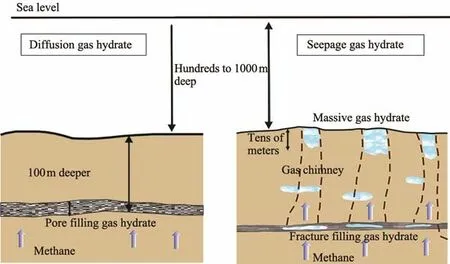
Fig.1 Sketch of the marine gas hydrate accumulation process.
Based on the most recent geological survey findings, it has been confirmed that there are vast amounts of shallow gas hydrate resources (Luanet al., 2008; Papeet al., 2011;Waageet al., 2019; Snyderet al., 2020a). These resources have been widely discovered in areas including the eastern marginal Sea of Japan, the Gulf of Mexico, the Okhotsk Sea, and the Barents Sea. For instance, the eastern side of the Japan Sea and Hokkaido is host to more than 1700 unique geological features, including hydrate mounds and pockmarks, and numerous hydrate samples have been obtained there. Fig.2 displays a 6 m thick bulk hydrate core obtained by a piston corer at a depth of 17 m. Some main characteristics can be indicated from that: 1) bulk shape occurrence, specifically nodular, lenticular, and thick layered;2) superficial buried depth, commonly less than 60 mbsf; 3)enormous resource potential, about 600 million cubic meters of methane in a single gas chimney.

Fig.2 Methane hydrate core obtained from the eastern margin of the Japan Sea (Snyder et al., 2020b).
Boswell and Collett (2006) have pointed out that the second most promising oceanic hydrate resource in the ‘Gas hydrate Resource Pyramid’ is the shallow hydrate, just below the sand-dominated hydrate. Therefore, it has become an international magnet for mining targets. Japan has initiated prospective studies (Matsumoto and Aoyama, 2020). In addition to the two offshore trial productions (Fujiiet al.,2015; Konnoet al., 2017; Yamamotoet al., 2019), Japan launched the ‘Detection and Development of Shallow Gas Hydrate Resources’ project in 2013, which consists of four stages: academic research, resource investigation, resource development technology innovation, and resource production. For now, it has entered the third stage. The main tasks are listed as follows.
1) Making technical schemes for the exploitation, recovery, and transportation of shallow hydrates, such as hydrate crushing and decomposition, gas collection, solid-liquidgas three-phase control, hydrate storage, and recovery,etc.
2) Evaluate the feasibility of the above scheme, including whether it is suitable for the recovery and transportation of shallow surface hydrate, its recovery rate, recovery time, stability, and safety, especially the economic evaluation of long-term mining.
3) Formulate emergency plans, including emergency plans in case of mud and water production, assess the safety risks of recovery equipment in case of emergencies, reduce environmental hazards to the ocean and atmosphere, and assess the stability of mining reservoirs.
China also emphasized gas hydrate production, aiming to realize industrialized development. In 2017 and 2019,China successfully implemented two offshore trial productions, creating a record of 86.14 × 104m3gas production in 30 days (Liet al., 2018; Yeet al., 2020). Shallow gas hydrate has also been found in the South China Sea. During the cruises of GMGS2-08/GMGS2-09/GMGS2-16 carried out by the China Geological Survey (CGS), core samples with shallow hydrate were obtained. The bulk hydrate occurrence is vein nodular and massive, and the buried depth range is from 8 to 30 mbsf (Liuet al., 2021).
However, in the past trial productions, the depressurization method was mainly used to dissociate the pore filling hydrate at about 200 mbsf (Schickset al., 2020; Wanget al.,2020; Wuet al., 2020). The production equipment and scheme cannot directly apply to shallow gas hydrate. Firstly, there are no pores in the shallow bulk hydrate, which leads to low efficiency of heat and pressure transfer, and the gas production law is essentially different from pore filling hydrate reservoir. Secondly, the thinner overburdened sediment may not supply enough mechanical bearing capacity, and a large empty area would be left after the hydrate is dissociated and collected, leading to formation collapse (Konget al., 2018). Therefore, a reasonable production plan is essential for the gas hydrate development strategy.
Researchers have already put forward some schemes to produce shallow gas hydrates (Zhang and Lu, 2016; Zhouet al., 2017a; Konget al., 2018; Xuet al., 2018). For example, Zhouet al. (2017b) proposed a solid fluidization mining method. After converting the solid bulk hydrate into a fluid state through mechanical crushing, the liquid-solid multiphase material was lifted through a pipeline. The hydrate particles will be gradually gasified during the lifting process as the seawater temperature increases and the hydrostatic pressure decreases. One problem is that the physical environmental impact on the seabed is unclear.
In summary, no actual trial attempt has been carried out internationally on shallow gas hydrate due to immature production technology and environmental constraints. In this paper, an alternative scheme is proposed for the recovery of shallow bulk hydrates using multi-branch hole depressurization technique, supplemented by thermal injection and the goaf refill process. Key aspects of this scheme are evaluated, and equipment support conditions are discussed to prove its feasibility further.
2 Well Construction and Production Procedure
The production system consists of three parts: the drilling and wellbore constructing section, the artificial lifting section, and the proppant backfilling section. The most critical function of the drilling and wellbore section is to overcome the low sediment resistance at shallow depth, providing sufficient mechanical capacity for the entire production system. Here the suction anchor is recommended, and detailed analysis is shown below. Meanwhile, the hydrate dissociation surfaces should be increased as much as possible, which is helpful in gas production. So, multiple horizontal sidetracking modules are necessary (Liet al., 2019b).It can penetrate and divide the bulk hydrate layer with micro-fracture. Studies have shown that heat excitation is more efficient than depressurization for the bulk hydrate dissociation (Chenet al., 2020). So, in this design, the artificial lifting section contains an electric submersible pump(ESP) and a thermal-fluid injection pump (TIP). ESP is used to depressurize mining, and TIP is used to heat injection. As we will discuss below, the alternative use of these two pumps can achieve good gas production results.When bulk hydrate is dissociated and pumped out, empty goaf will be left in the layer. Therefore, the last but not least section is proppant backfilling by the mortar pump(MP). Packing the goaf with unique materials, such as the resin-coated sand, the reservoir will be reinforced as mining continues, guaranteeing the absolute production security. The well construction system is shown in Fig.3.
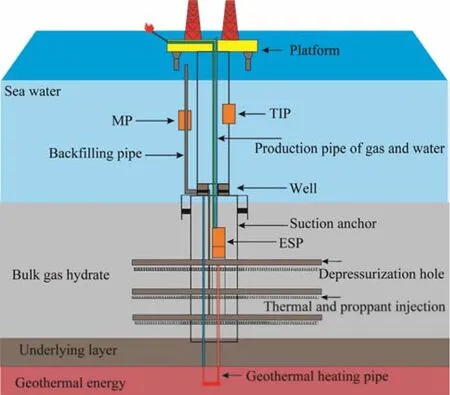
Fig.3 The sketch diagram of the bulk hydrate production system based on the radial drilling-heat injection-back fill method.
Well construction and production procedures are described as follows:
1) Use jetting conductor or suction anchor to create a large diameter vertical wellbore. A bunch of depressurization holes and agent injection holes are drilled by a horizontal sidetracking module at different depths on both sides.At the current level of drilling technology, the maximum length of these branch holes is about 100 m in the clayed silt sediment.
2) After the drilling process, the ESP/TIP/MP are installed at different positions. Three kinds of pumps can be switched manually to fulfill the tasks of pressure drop, thermal-fluid inject, and propane fill. A three-phase separator of gas-water-sand is placed on the production line.
3) Start the ESP to reduce the pressure around the branch holes during production. Gas will be collected through the pipeline after the hydrate decomposition. Real-time monitoring of gas and water production is necessary to estimate the deficit of the hydrate reservoir. Branch holes are opened from bottom to top in sequence in order to mine the lower part first and fill the goaf soon, which is beneficial to the reservoir security.
4) When the gas production rate has dramatically decreased, the thermal-fluid must be pumped into the layer and soaked for a certain time to stimulate more hydrate dissociation. Hot water would be a good choice, particularly at the production sites with good geothermal resources in deeper formation.
5) Gas production continues with ESP pumping and TIP soaking alternatively until the formation stability is close to failure. Then proppant injection procedure starts. Materials like resin-coated sands are pumped into the goaf by MP and fill the empty zone to recover the bearing capacity of soils. After that, open the upper branch holes and repeat the above steps until the production work finishes. The recovered gas and gas-saturated liquid are transported to the deck for further treatment.
3 Scheme Feasibility Evaluation
3.1 Soil Parameters
Multiple drilling programs conducted by the CGS have proved the widespread distribution of gas hydrates on the northern slope of the South China Sea, including deepseated gas hydrates and shallow gas hydrates. In this paper,we take the investigation data at one geotechnical site to evaluate our proposed design. The site is near the offshore production well, with a water-depth of about 1000 m. The sediment deposited on the continental slope is dominated by hemipelagic fine-grained sediments (Liet al., 2012). Soil properties are obtained byin-situpiezocone penetration test (PCPT) and laboratory testing, as shown in Table 1.

Table 1 Soil design parameters and effective soil strength parameters
3.2 Well Construction Stability Analysis
The overburden strata of shallow hydrates are commonly composed of newly deposited and unconsolidated sediments, such as clay, sand, or mudstone. So, there would be a high possibility of insufficient wellbore stability. For dril-ling in the shallow reservoir, the construction is mainly composed of a 914 mm diameter conductor with jetting string and a 340 mm diameter casing. So, we first evaluate the stability parameters of this well construction. The buoyant weight is set to 529 kN, and the jetted depth is set to 60 m for calculation.
The immediate axial capacity of a jetted conductor is equivalent to the load required to penetrate the formation during its installation or immediately after its installation.During installation, the jetting process removes the soil beneath the conductor’s tip, lowering the lateral soil pressure acting on the conductor and reducing the soil resistance,leading to more significant uncertainty in conductor shaft friction.
Soil parameters required for the jetted conductor analysis include undisturbed undrained shear strength, remoulded undrained shear strength, and ε50(listed in Table 1). The immediate axial capacity of a jetted conductor can be estimated according to the following relationship:
where,Q1is immediate axial capacity prior to reciprocation,Qsis compressive/tensile capacity available from external friction acting on the conductor,fis unit skin friction acting on the outer surface of the conductor,Ais the external surface area of the conductor.
The unit skin friction, varying with depth, is primarily the function of the soil shear strength for clay or the effective vertical stress and internal friction angle for sand.The immediate axial capacity of a jetted conductor is equivalent to the load required to penetrate the formation during or immediately after its installation. Fig.4 depicts the immediate axial capacity of the conductor at the setting depths of 40 m, 50 m, and 60 m and the range of the WOB during the conductor installation. It indicates that the immediate axial conductor capacity could vary between 75%and 100% of the maximum available weight-on-bit (WOB)during installation.

Fig.4 Estimated immediate axial capacity at different depth.
The analysis shows that soil conditions can be determined, and the final applied WOB is the most influential parameter affecting the conductor performance. Although the installation of conventional jet conductors can be done with the correct WOB, there is a considerable risk during mining. As the bulk hydrate is dissociated and pumped out,the conductor bearing capacity decreases significantly. Therefore, it is recommended to use a sizeable implantable wellbore structure such as suction anchor (Fig.5). The suction anchor conduit is composed of a large cylinder and some internal constructions, with a diameter of 4 – 8 m and a length of 12 – 15 m. A single conduit or multiple conduits can be installed inside.
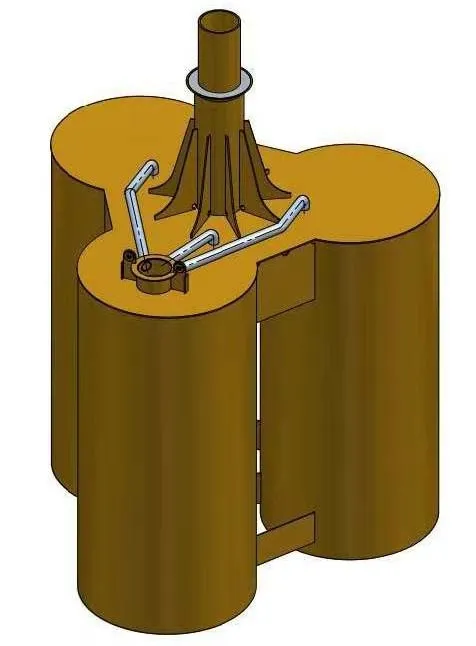
Fig.5 Ssketch of the suction anchor with multi conduits.
The friction calculation formula of single barrel suction anchor is as follows:
whereQtis time-dependent bearing capacity,Q0is instantaneous frictional resistance,Wis resistance, ∆αtis soil strength restoration factor,Suaveis the average shear strength of soil,Suis end soil shear strength.
When the suction anchor is placed to the predetermined depth, the resistance varies based on various factors such as external wall shear friction and internal wall shear friction. Due to the large outer diameter, the suction anchor conduit can provide a huge load capacity. Even if the buried depth of hydrate is further reduced, for example, only 10 mbsf, the multi conduit suction anchor can provide enough load capacity to stabilize the well construction.
3.3 Hydraulic Fracture Assessment
In this study, the hydraulic fracture pressure was predicted based on the shear failure model for cohesive soils developed by Aldridge and Haland (Aldridge and Haland,1991). The model considers an undrained plastic failure mechanism at the borehole wall. Accordingly, the formation breakdown is assumed to occur when the maximum deviator stress exceeds twice the undrained shear strength of the soil. Based on this approach, the excess fracture pressure at a specific depth may be taken as the lowest values given by the following equations:
where ∆Ѱfis excess fracture pressure,Suis undrained shear strength,σ'voisin-situeffective vertical stress,K0is coefficient of lateral earth pressure at rest, ranging from 0.45 to 1.6 in this calculation.
According to cavity expansion theory, the yield model for cohesionless soils considers the stress in the soil around an unsupported borehole. The definition of soil failure in the yield model is the initiation of plastic deformation at the borehole wall. The estimation of excess fracture pressure is related to the soil parameters of thein-situeffective stresses and the angles of internal friction. The total hydraulic fracture pressure is subsequently obtained from the equation below:
whereu0is pore fluid pressure at a given depth of the formation.
The predicted total hydraulic fracture pressure is shown in Fig.6, together with the estimated pressures exerted at the borehole wall by drilling fluid or grout with densities of 9, 10, 11, 12, and 13 pounds per gallon (ppg). The results indicate that drilling fluid or grout with these densities may not cause potential fracture of the soils in the top zone of 60 mbsf.
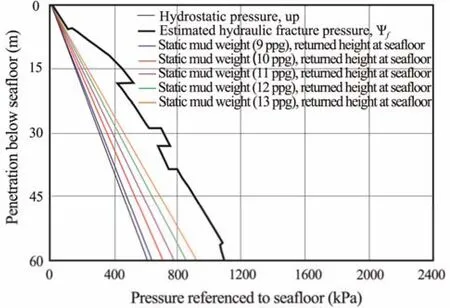
Fig.6 Hydraulic fracture pressures.
3.4 Estimation of Gas Production Behavior
According to the production scheme proposed in this study, the conceptual model, shown in Fig.7, is established with the geological parameters of the northern part of the South China Sea. The radial dimension of the model is 150 m, and the total thickness is 220 m, including 80 m of hydrate layer, 60 m of overburden layer, 30 m of underlying layer, and 50 m of branch hole.
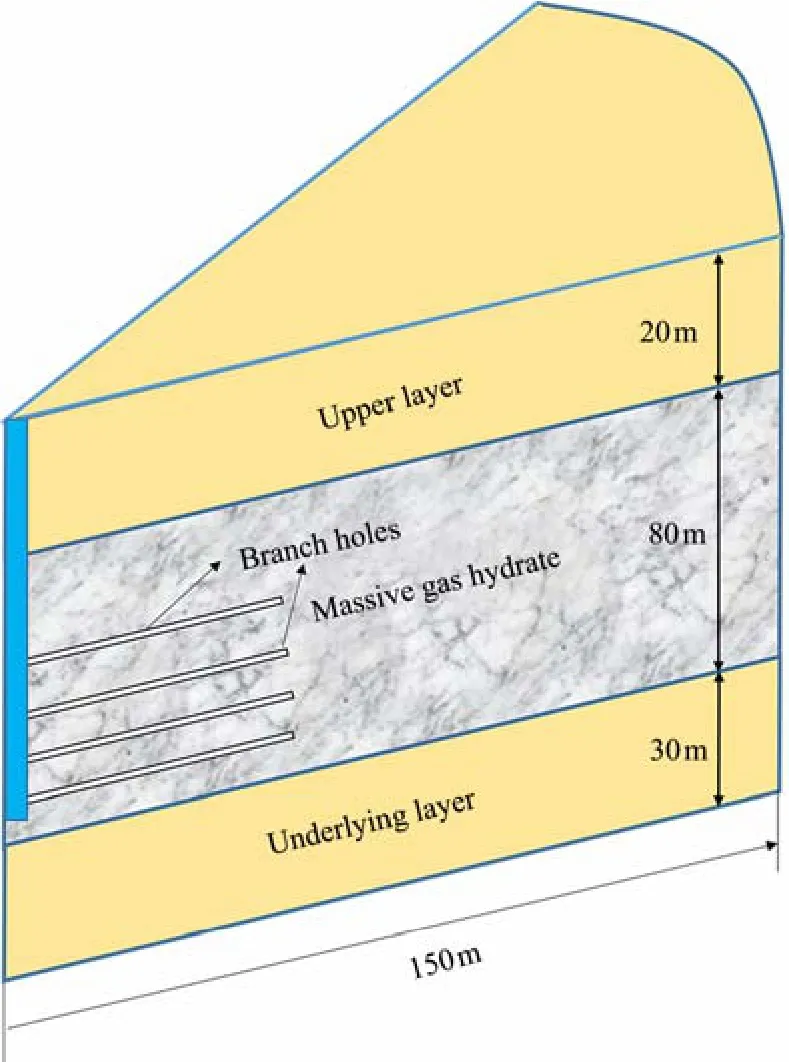
Fig.7 Conceptual model for the massive gas hydrate production.
It should be noted that the bulk gas hydrate layer is composed of pure hydrate with no sediments, and the hydrate is not porous media. Mass and heat transfer control equations are different between bulk hydrates and pore filling hydrates. Thus, the numerical simulator commonly used for the pore-filling hydrate, based on the flow theory in porous media, is inapplicable. However, the bulk hydrate can be approximately considered as pseudo-porous media with the following settings:
1) The porosity (φ) of the bulk hydrate layer is infinitely close to 1, which indicates that there is almost no skeleton and almost all the domain is pore space. Ideally, the porosity should be set to one. However, we setφ= 0.98 because of the requirement of numerical stability.
2) The hydrate saturation is set to 1, meaning that the pore space is filled with hydrates.
3) The intrinsic permeability of the hydrate layer is relatively tiny before dissociation, but it is pretty large after dissociation. When all the pore space is filled with hydrate,the pseudo-porous media is almost impermeable. However, after the hydrate is dissociated, the fluid flow in the pseudo-porous media is free becauseφ= 1.
TOUGH+HYDRATE (Moridis, 2014) is a famous gas hydrate numerical simulation code. The mod is used to simulate the production process based on the above settings. The parameters used in this paper are listed in Table 2. More details of the numerical model can be found in the paper by Wanet al. (2022).
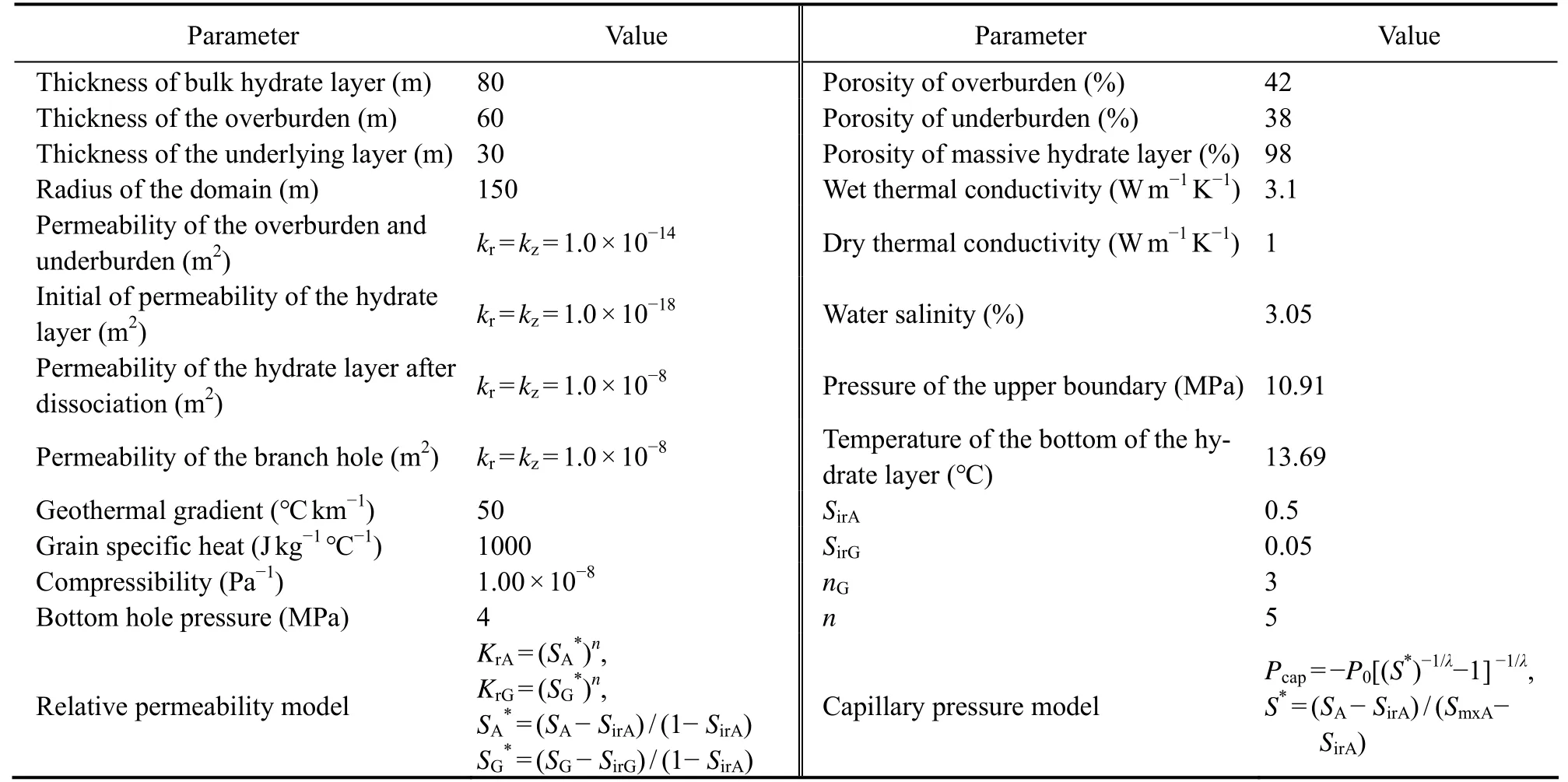
Table 2 Main conditions and properties of the model
During the productivity simulation, the hot water injection stewing process is added as a supplementary to depressurization to enhance the decomposition effect of hydrates. Fig.8 shows the time-varying curves of gas production rates in the three stages, and Fig.9 shows the pressure and hydrate saturation fields around the branch holes.
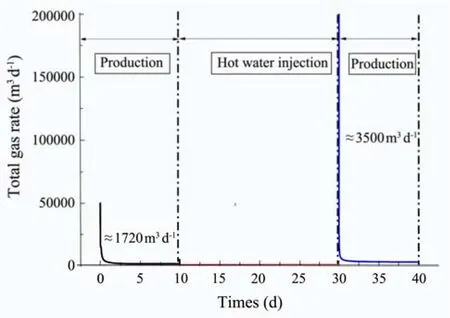
Fig.8 Time-varying curves of gas production rates in the three stages.

Fig.9 Pressure field and hydrate saturation field during production.
It can be seen that the gas production rate by depressurization in the first stage is significantly high, with an average of about 1720 m3d−1in 10 d, mainly because multi-branch holes increase the discharge area and the hydrate decomposition range is enormous. After that, hot seawater was injected and stewed for 20 d in the second stage. Then the well is opened for depressurization production again.Due to the hydrate dissociation caused by hot seawater, the gas production rate in the beginning of the third stage is very high, and the average gas production rate in 10 d of the third stage is 3500 m3d−1.
3.5 Goaf Backfilling Evaluation
One of the most significant risks during the bulk hydrate production is goafs appeared after hydrate dissociation. Without the support of the solid sediment skeleton, the upper layer is prone to subsidence and collapse. In order to avoid this situation, it is necessary to backfill the goaf to recover the formation bearing capacity after a period of production.
The following equation can be used to calculate the volume of goaf:
whereVdis the goaf volume,rdis the radius of the goaf,hpis the thickness of the goaf.
Sand particles must be filled in goaf from bottom to top,assuming the proppant as uniform spherical particles, as shown in Fig.10.

Fig.10 Sketch diagram of the hydrate dissociation area around the wellbore.
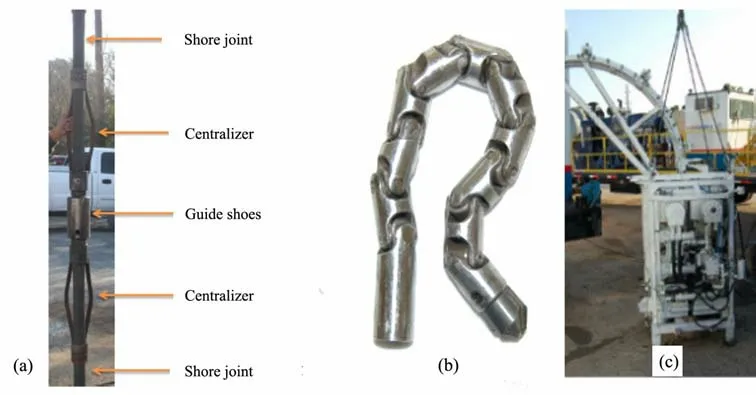
Fig.11 Drilling tools for radial horizontal wells. (a), downhole tool combination; (b), radial shaft; (c), injection head.
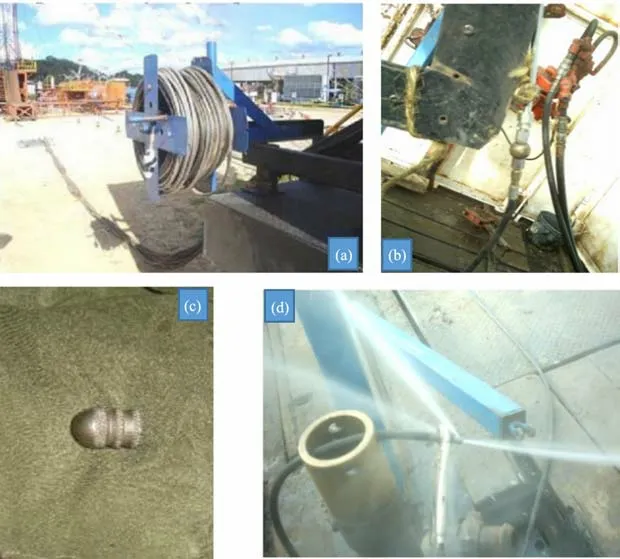
Fig.12 Injection tools for radial horizontal well. (a), high-pressure hose; (b), the connection between hose and coiled tubing; (c),injection bit; (d), pressure injection.
According to the random packing theory of spherical particles, the porosity of random loose packing of equal diameter spherical particles is about 40% (Allen, 1965).So, the volume of proppant used for filling is:
whereVsrepresents the volume of injection proppant,Vdrepresents the goaf volume of hydrate.
one m3gas hydrate can produce about 160 m3of methane gas in standard state. The dissociation gas is recovered except for a small part dissolved into water. The volume of hydrate goaf can be calculated from the gas production rate and production time, and then the volume of proppant required for filling can be calculated by Eq. (7).
whereqgis the average gas production rate,tdis production time.
4 Support Conditions of Existing Technical Equipment
In recent years, for the sake of efficient and safe exploitation of natural gas hydrates, some innovative mining ideas have been put forward, some of which have been verified by the reliable numerical simulation (Liet al., 2011; Rahimet al., 2015; Fenget al., 2019; Liet al., 2019a). However,most of them are still in the theoretical stage and have no actual engineering construction equipment support. In order to further demonstrate the operability of this scheme,we listed some oil and gas development equipment that can realize the key steps of this production scheme.
4.1 Radial Drilling Technique
The radial drilling combines the technique of conventional horizontal well and coiled tubing. It is the extension and widening of the horizontal well technique. Drilling and injection tools are the two main modules in this technique, as shown in Figs.11 and 12, respectively. The drilling tools mainly include downhole tool combination, radial shaft, injection head, and milling bit.
The injection tool is used to make branch holes. The solid-free drilling fluid is pressurized and transmitted down to wellbore through the coiled tubing. Then the fluid sprays through the drill bit, and the high-pressure potential energy is converted into kinetic energy to generate a high-speed impulse, forming the horizontal branch hole with a radius of 3.8 – 7.6 cm. Special guide shoes are used to complete the processes of deflection, orientation, and complex wellbore control. The nozzle and high-pressure hose are designed to cooperate with the coiled tubing to ensure the straightness of the wellbore. Radial drilling can be carried out in the same formation or different layers of a single well.
4.2 Goaf Filling Material
An excellent proppant is a new type of resin-coated sand that can rapidly solidify at ultra-low temperatures. Agent A and B are created by coating the surface of the quartz sand with the ultra-low temperature fast curing resin cementation and the layer isolation agent, respectively (Fig.13).When mixed and dried, the material shows non-adhesion and good fluidity. During thein-situgoaf filling procedure,the resin-coated sand is carried by seawater into the target layer, where it rapidly consolidates under the low temperature of the formation, forming an artificial solid skeleton with high strength and permeability.

Fig.13 Epoxy resin coated particles and artificial cores.
The main technical parameters of this resin-coated sand are listed as follows: the consolidation temperature is 20–350℃; the curing time is adjustable from 6 to 24 h; the compressive strength is more extensive than 10 MPa; the liquid permeability is larger than 4 μm2. The 24-h particle consolidation strength at 20℃ is more than 10 MPa. It can be seen that the proppant can rapidly consolidate at low temperature, which reduces the well occupation time and improves the production efficiency.
5 Conclusions
Although China, Japan and other countries have included the shallow hydrate development in their future energy plans, and researchers have initially proposed some mining schemes, actual field tests have not yet been conducted.The fundamental technical problems to be solved are how to avoid the engineering geology risks at shallow depths and improve the bulk hydrate gas production efficiency. In this paper, an alternative design for shallow gas hydrate recovery is proposed, based on the combination of radial drilling, heat injection, and backfilling methods. Its feasibility is assessed by using the reservoir data of the South China Sea. The results show that the soil can provide enough bearing capacity for the conventional well construction at depths of 60 mbsf, and the drilling fluid with densities ranging from 9 to13 ppg can prevent hydraulic fractures.However, with the dissociation of bulk hydrates, the well will face great risks in stability. The suction anchor is recommended as it shows enough load capacity at only 10 mbsf. The numerical simulation results show that, under the constraints of the established model, the average gas production ratio of four branch hole depressurization method is 1720 m3d−1. However, with the hot water injection,the average gas production ratio can be increased to about 3500 m3d−1. In addition, the backfilling volume in the goaf can be estimated according to the gas production volume.It is possible to realize this scheme with the existing engineering equipment, so it has strong application prospects.
Acknowledgements
This study was financially supported by the Natural Science Foundation of Shandong Province (No. ZR2020110 30013), the National Natural Science Foundation of China(No. 41976205), the Marine S&T Fund of Shandong Province for Pilot National Laboratory for Marine Science and Technology (Qingdao) (No.2021QNLM020002), and the China Geological Survey Program (No. DD20221704).
杂志排行
Journal of Ocean University of China的其它文章
- Using Natural Radionuclides to Trace Sources of Suspended Particles in the Lower Reaches of the Yellow River
- Eutrophication of Jiangsu Coastal Water and Its Role in the Formation of Green Tide
- Microstructure Characterization of Bubbles in Gassy Soil Based on the Fractal Theory
- Morphological and Sulfur-Isotopic Characteristics of Pyrites in the Deep Sediments from Xisha Trough, South China Sea
- Deformation Characteristics of Hydrate-Bearing Sediments
- Genetic Analysis of Structural Styles in the Makran Accretionary Wedge – Insight from Physical Simulations
